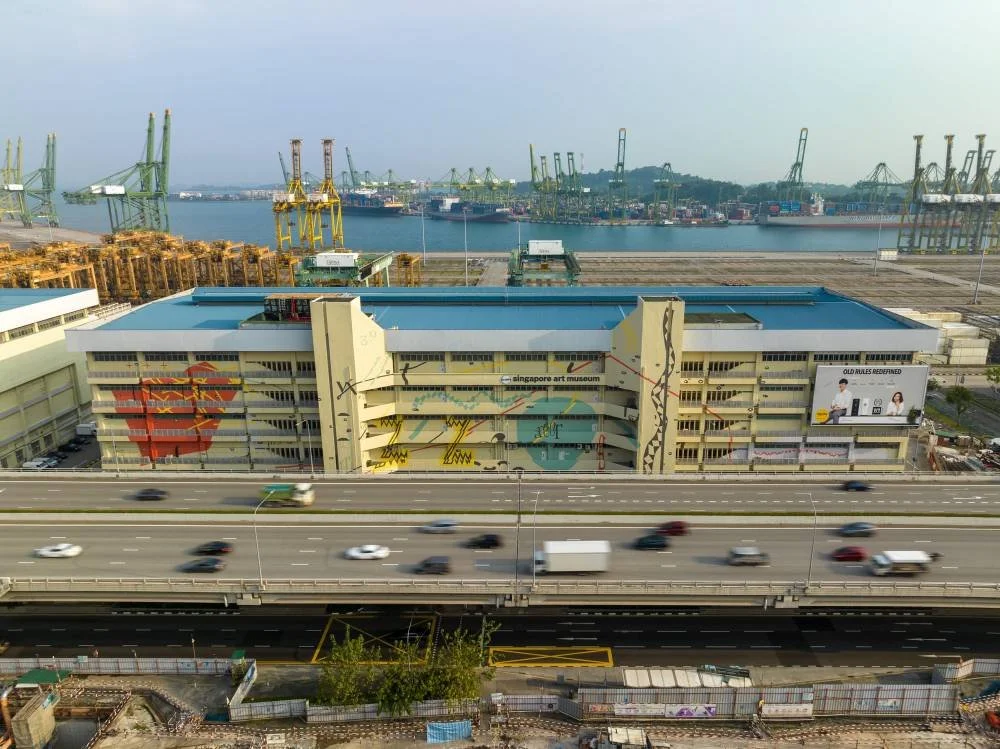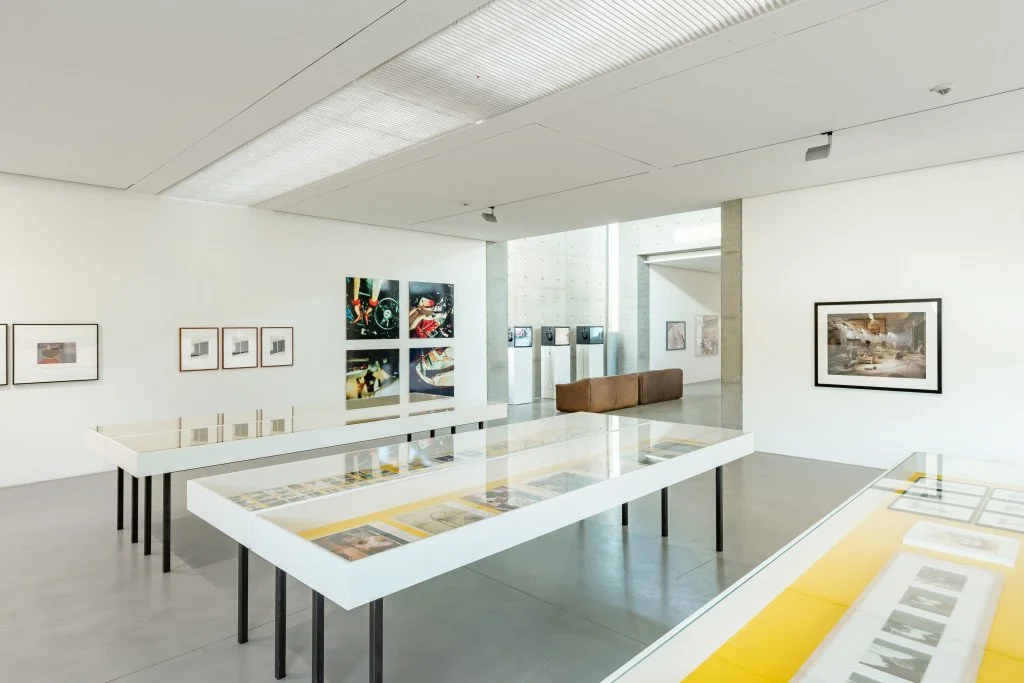Rirkrit Tiravanija
November 20, 2025 – April 5, 2026 | Walker Art Center, Minneapolis
Harold with Rirkrit Tiravanija’s “Untitled 2006 pavilion table and puzzle representing the famous painting by Delacroix La Liberté Guidant le Peuple 1830.” Photo Credit: Sheila Regan of the Minneapolis Post
Show & Tell is an exuberant, hands-on exhibition designed just for kids!
Built around five exploratory zones—Play, Make, Find, Read, and Watch—Show & Tell encourages young people to approach contemporary art with creativity and imagination. Where Cas Holman’s Critter Party (2024) offers a sculpture to touch, climb on, and modify, Caroline Kent’s colorful abstractions inspire kids to create their own collages to project in the gallery. A porthole wall reveals a trove of hidden surprises, from a miniature Spoonbridge and Cherry to a family of funky creatures. And in the comfy “Watch” zone, a varied selection of short films prompts curiosity and conversation.
With vibrant graphics and thoughtful spatial design, Show & Tell is an exhibition full of tiny worlds, tall tales, and endless stories.



















